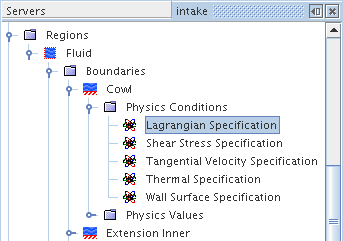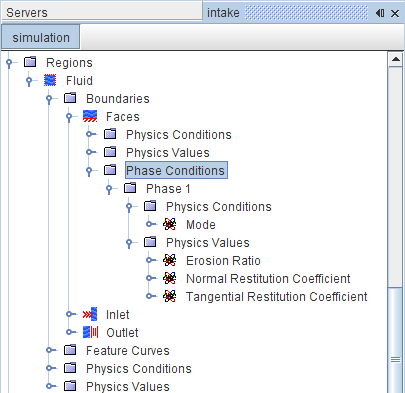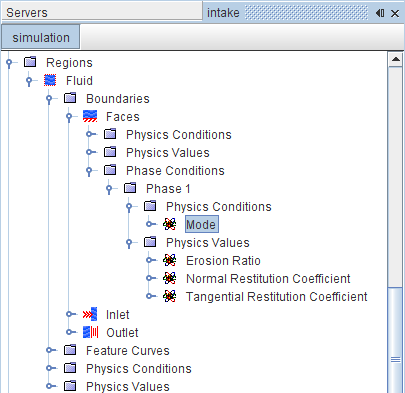Setting Lagrangian Phase Boundary Conditions for a Specific Boundary
Lagrangian phase boundary conditions can be set at specific boundaries as well as for the entire phase.
The Lagrangian Specification node allows you to set these conditions. This node is a sub-node of the Physics Conditions node for the boundary of interest.

To set phase-specific conditions:
- Select the Lagrangian Specification node.
- Set
Method to
Specify for Boundary.
The Phase Conditions manager node appears for the boundary.
Lagrangian Specification Properties
| Method | Selects the method for the Lagrangian boundary condition specification. | |
| Use Phase Defaults | Specifies that the default boundary conditions for all Lagrangian phases are used at this boundary. | |
| Specify for Boundary | Specifies that specific boundary conditions are provided for all Lagrangian phases at this boundary. A Phase Conditions sub-node is added as a child to the Physics Values node for this boundary. | |
What Is the Phase Conditions Manager?
The Phase Conditions manager node is added to a Physics Values node of a boundary when you choose to specify Lagrangian Phases boundary conditions specifically for that boundary.

There are sub-nodes of the Phase Conditions node representing each of the Lagrangian phases.
Selecting the Mode
The node within each phase, which has properties, allows you to specify the boundary interaction mode at the boundary for that phase. Depending on the selected boundary interaction mode, additional sub-nodes can be added for boundary values.

Phase Boundary Interaction Mode Properties
| Active Mode | Selects the boundary interaction mode for the Lagrangian phase at this boundary. The actual list that you see depends on the compatibility with the boundary type and the selected Lagrangian phase models. | |